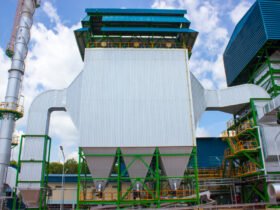The foundation of the solar panel is very crucial with regard to the design and functioning process of any solar system. The structural support is essential to keep the solar panels at the required optimum tilt. In fact, this can impact the overall system temperature as well. The foundation of any solar panel also depends on the budget and structure of the house, installation space etc. In this article, we will discuss various aspects with regard to the Solar Panel Foundation.
Primarily these are two categories that might help us understand more about the foundation related to the solar panels:
- Ground-mounted
- Roof-mounted
Here we will be focusing on ground mounted solar panels. These have different categories of foundation. Let us explore more.
Foundation Mounts:- Foundation mounts are one of the most used structures, which require the preparation of the land for the excavation process. The primary assessment of the site involves geotechnical analysis of the so is required to understand the stability of the solar foundation.
Ballast:- In case the soil is good enough for the drilling or excavation process, a ballast mount system could be of great use. Concrete blocks are required to be anchored in the ground primarily for this. These kinds of structures are highly in use for residential installations.
Pole:- To install the smaller solar systems, pole mounts are used usually. In the case of pole mounting, the need for any complicated foundation is not there. Rather a simpler pole made of steel alongside a concrete structure is sufficient. However, in case of issues related to soil issues or unwanted weather conditions, special measures might need to be taken.
There could be two different of its kind such as side pole & top pole. Side pole mounts are mostly used for lighting, and top pole mounts are designed with mounting sleeves made of heavy steel.
Again, there is another of its kind as well, i.e., multipole mounts, which have similar principles except the solar panels are horizontally placed in a single line. One of the primary advantages of this kind of solar panel foundation is that it can hold up much bigger systems without any issue.
Now, there are a few basic requirements for laying the solar panel foundation, for example, the dimensioning process of the solar systems, the proper evaluation process of the soil, selecting the right kind of foundation etc.
Now, let us understand the roof-mounted process with regards to the solar panel foundation.
This is rather a cost-effective way to put up the foundation as the primary structure is primarily dependent on the rooftop itself.
There are various types of mounting processes:
It’s about the process of attaching rails using screws & bolts on the rooftop in an appropriate manner. Solar panels are placed on the rails with the help of clamps.
Devoid of rail:- In this case, the entire framework and placement is done using the screws and bolts as per the requirements. Without a doubt, the process becomes easy and convenient; on the other end, the overall cost of laying the foundation also becomes less.
Flat roof mounting:- This kind of foundation laying process is primarily used for commercial setups. In this process, the ballasted blocks are placed alongside the old, assembled structure to provide support.
A few important aspects to consider in the roof-mounted process are the process of preparing the necessary components, properly identifying the distance of the rails while placing and being in sync with the guidelines set up by the local authority.

Concluding thoughts
In short, the solar panel foundation is the fundamental structure of the solar systems properly. Based on the requirements and cost, you need to choose the best suitable one.








Find Us on Socials